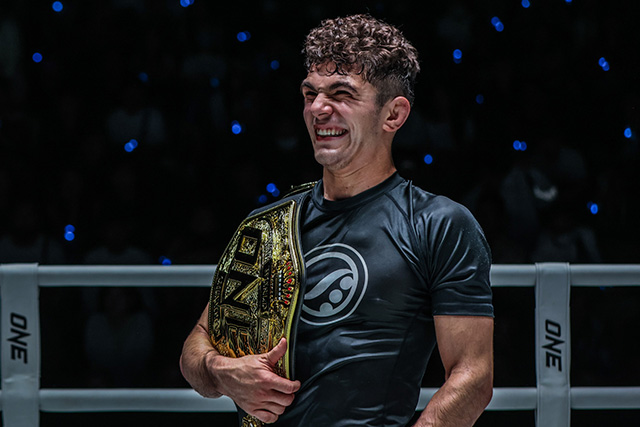An Existential Challenge to the UFC’s Dominion
The conference has finished. No definitive ruling from the judge yet but he said several times it is likely he will certify the bout class. That means the antitrust lawsuit against the UFC is likely to proceed, and the waters become much more treacherous for UFC/Endeavor.
— Josh Gross (@yay_yee) September 17, 2020
The federal judge presiding over a nearly six-year-old lawsuit with the potential to restructure the mixed martial arts business on Thursday revealed that he is finalizing a key ruling that will likely allow the case to proceed to trial.
Advertisement
“We were really hoping for a judgment, but we feel Judge Boulware is taking this very seriously,” said Nate Quarry, one of six fighters named as a plaintiff on the antitrust class-action case.
Boulware’s pronouncement holding off on a ruling “sucked,” Quarry
said, but when the judge noted he was likely to certify the “bout
class” of fighters “I stopped and held on. I was actually thinking
to myself, ‘Is this him just saying it, or does he really mean
this?’”
Then the judge said it a second time … and a third … and a fourth.
“I was like, all right, if I say something once it’s pretty solid,” Quarry said. “If I say it four times, you can bet the bank on it.”
Presuming Boulware certifies that approximately 1,200 competitors who fought at least once in the UFC between Dec. 16, 2010 and June 30, 2017 can be represented by the lawsuit brought by Quarry, Cung Le, Jon Fitch, Brandon Vera, Kyle Kingsbury and Javier Vazquez in 2014, the Ultimate Fighting Championship’s dominion over MMA will face an existential challenge.
By alleging that Zuffa schemed to establish and maintain control of the market by locking down fighters long-term, thus exploiting monopolistic and monopsonistic powers to suppress wages relative to what athletes can get in an open market, the ramifications extend beyond monetary damages that could range from $800 million to $1.6 billion.
“This affects not just the plaintiffs and the class,” Quarry said. “This will really change the sport for every fighter moving forward—and from the past, as well. I think that’s why it’s taking so long for his judgment to come through, because again, he knows how big of a ripple this is going to make throughout the world in MMA with fighters from everywhere.”
The central question in front of the court focuses on the UFC’s alleged coercive one-sided agreements with fighters that, plaintiffs argue, yield anti-competitive practices that allow Zuffa to maintain control over the bulk of elite talent in MMA, all while swallowing up or spitting out wannabe competitors as they emerge. By the UFC accruing a large share of the top fighters in the world, athletes outside the promotion rarely get included in discussions about No. 1 rankings.
This type of distinction is worth more than mere adoration from fans. It should add significant contractual value, yet plaintiffs allege that for fighters in the single-entity UFC, it has not worked out that way. Why? Because free agency within the UFC does not exist and little leverage can be found, outside of fleeting moments like striking it hot with fans or winning a series of bouts to rise up the promoter-controlled rankings.
Documents show that Zuffa maintained a revenue split for much of the past decade that benefited an organization earning roughly $80 for every $20 the fighters received. A 20 percent wage share represents significantly less than what athletes in other major sports get paid relative to team owners, and in competitive labor markets that split approaches 50/50.
Since the UFC’s revenue is largely tied to which bouts it can promote, “wage share” is an appropriate metric to measure the financial damages from antitrust violations, the plaintiffs argue, because fighters in and of themselves are the product UFC sells. Experts for the UFC rightly counter that wage share has never determined financial damages in an antitrust case having to do with monopsony power, and an appeal to the Ninth Circuit is expected whichever way Boulware rules.
Boulware in May had announced a class certification order would be forthcoming. Months later, the judge is poised to issue a historic order and opinion certifying a class of fighters can move forward seeking damages in a way that has not been done before. While Boulware repeated that he is likely to certify the “bout class,” the judge did not mention the fate of the “identity class” featuring fighters whose image and likeness was utilized by the UFC between Dec. 16, 2010 and June 30, 2017. The judge previously expressed skepticism about certifying this class, and by avoiding any mention of it on Thursday, he may have signaled that fighters like Quarry, who last fought March 2010, could be out of luck.
“We’re feeling pretty good about this since our last time in court,” said Quarry, a former middleweight title challenger.
More than a year after evidentiary hearings featured expert testimony from both sides in Boulware’s Las Vegas courtroom, where the judge seemed to respond well to the fighters’ arguments, a protracted fight over the future of MMA has just begun to heat up.
« Previous UFC Fight Night 178 Weigh-in Results: Covington vs. Woodley Set as Everyone Makes Weight
Next UFC Releases ‘The Ultimate Fighter’ 14 Winner John Dodson »
More




 UFC News & Features
UFC News & Features